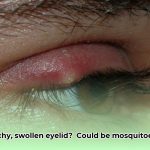You woke up with itchy red bumps. Your first thought? “Carpet beetles!” It’s a common assumption, but here’s the truth: carpet beetles don’t bite. This guide explains what’s really causing your skin irritation, how to find relief, and how to prevent future problems.
Decoding the Itch: It’s Not a Bite
You’re itching like crazy. You suspect carpet beetles. You’re probably right about the beetles, but wrong about the bites. Carpet beetles don’t bite. The itch is likely an allergic reaction to the microscopic, barbed hairs (called setae) on carpet beetle larvae. These hairs act like tiny splinters, irritating your skin and causing a reaction that mimics bites.
What Does a Carpet Beetle Rash Look Like?
The rash typically appears as small, red, raised bumps, sometimes clustered, sometimes scattered. The affected area can be intensely itchy, possibly even burning. The rash can occur anywhere your skin contacts the larvae or their shed hairs, not just exposed areas.
The Real Culprit: Carpet Beetle Larvae
The problem isn’t the adult carpet beetles (which feed on pollen and nectar outdoors), but their larvae. These small, worm-like creatures are covered in the irritating setae. They feed on natural fibers like wool, cashmere, fur, and feathers. If you find these larvae in your home, they are the likely source of your itch.
Taming the Itch and Evicting the Invaders
Here’s a step-by-step guide to identify, treat, and prevent carpet beetle issues:
Step 1: Confirm the Suspects
Look for larvae in carpets, rugs, closets, drawers, and upholstered furniture. The larvae are small and often a mix of brown, yellow, and black, resembling fuzzy worms. Adult beetles are small, oval-shaped, and often mottled with brown, black, and white. They can sometimes fly.
Step 2: Soothe Your Skin
Over-the-counter antihistamine creams or oral medications can help. A cool compress can also provide relief. If the rash looks infected (increased redness, swelling, pain) or the itching is severe, consult a doctor or dermatologist.
Step 3: Eliminate the Infestation
- Thorough Cleaning: Regularly vacuum carpets, rugs, and upholstered furniture, focusing on crevices and seams. Wash affected clothing and bedding in hot water (at least 120°F/49°C) and dry on high heat.
- Natural Pest Control: Consider diatomaceous earth (a powder that dehydrates insects).
- Professional Help: For stubborn infestations, consult a pest control service.
Step 4: Prevent Future Infestations
- Regular Cleaning: Frequent vacuuming and dusting disrupts the carpet beetle life cycle.
- Proper Storage: Store susceptible items (wool, fur, etc.) in airtight containers.
- Natural Deterrents: Cedar chips or lavender sachets may discourage carpet beetles, although scientific evidence supporting their effectiveness is limited.
Carpet Beetle Rash vs. Other Bites
| Feature | Carpet Beetle Rash | Bed Bug Bites | Flea Bites |
|---|---|---|---|
| Appearance | Small, red welts, often clustered | Often in lines or clusters; may have a dark center | Small, itchy bumps, often on ankles and feet |
| Location | Anywhere larvae/bristles touch | Typically on exposed skin while sleeping | Concentrated on lower legs and feet |
| Itchiness | Intense | Intense | Moderate to intense |
Understanding the Allergic Reaction
Some people are more sensitive to carpet beetle setae than others. Ongoing research explores the specific allergens in these hairs and how they interact with the immune system. While current knowledge suggests the setae are the primary irritant, other factors might contribute to the skin reaction.
Addressing the Root Cause: Comprehensive Prevention
Beyond treating the rash, address the infestation. A multi-pronged approach is best:
- Deep Cleaning: Vacuum and steam clean carpets, rugs, and upholstery regularly. Pay close attention to areas where pets sleep or rest, as pet hair and dander can attract carpet beetles.
- Laundry: Wash bedding, clothes, and other textiles in hot water (at least 120°F/49°C) and dry on high heat.
- Storage: Store vulnerable natural fibers in airtight containers with cedar chips or lavender sachets.
- Clutter Reduction: A clutter-free environment offers fewer hiding places for carpet beetles. Regularly declutter and organize storage areas.
- Professional Pest Control: For persistent infestations, professional pest control services offer effective treatments and prevention strategies.
When to Seek Medical Advice
Consult a doctor if:
- Symptoms persist for more than two weeks.
- Itching is severe or interferes with sleep or daily activities.
- You notice signs of infection (increased redness, warmth, swelling, pus).
- You experience any other concerning symptoms.
By understanding the cause of your discomfort, taking proactive steps, and seeking professional help when needed, you can effectively manage carpet beetle infestations, find relief, and maintain a comfortable, itch-free home. Remember, research is ongoing. Stay updated on the latest findings for the most effective strategies.
- Get Fuller Hips with Hip Fillers: Sculptra Guide - June 30, 2025
- Get Rid of Hip Dips: Sculptra Filler for a Smoother Silhouette - June 30, 2025
- Stop Hip Bursitis Pain: Exercises to Avoid for Faster Recovery - June 30, 2025






